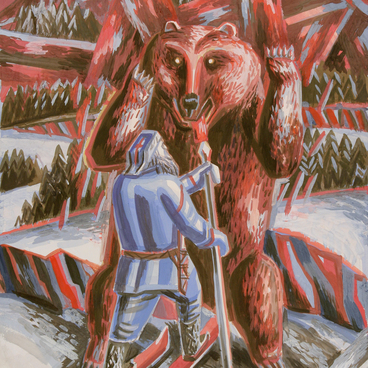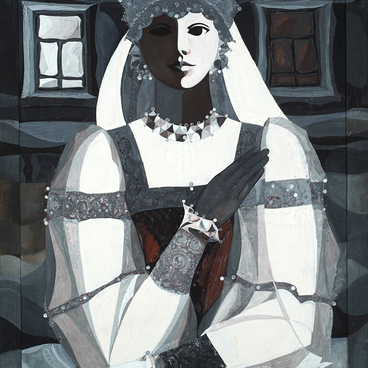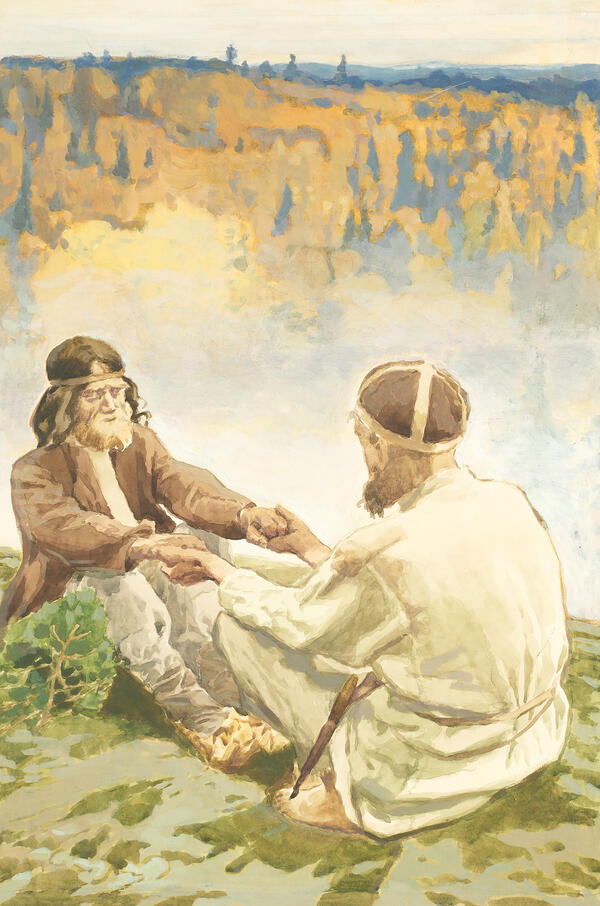The second part of the twentieth rune of the “Kalevala” is devoted to the story of the brewing process. In a way, the story is narrated like a recipe. However, this recipe is not easy to follow. Osmotar, the brewer, takes six excellent grains of barley, seven heads of large hops, and eight ladles of pure spring water. She puts these ingredients in a cauldron and places it on a fire. Once the water is boiled, Osmotar reduces the flame and allows the mixture to cool. Afterwards, she transfers the liquid into a new birch barrel for fermentation.
Osmotar Brews Beer
Creation period
1970–1975
Place of сreation
Petrozavodsk, the USSR
Dimensions
20,1x28,2 cm
Technique
paper; linocut
Collection
Exhibition
0
Open in app#2
Myud Marievich Mechev was a renowned Russian graphic artist, illustrator, and landscape painter. He was awarded the title of People’s Artist of the Russian Federation and was a member of the Russian Academy of Arts.
From 1967 to 1975, the artist was working on the second version of his Kalevala illustrations made in the linocut technique. This edition of the “Kalevala” gained widespread recognition and has been reprinted in both Russian and Finnish several times.
A fermented drink made from malted barley and hop has been known for centuries. In the 14th century, in a letter written on birch bark, a person named Griksha addresses a man named Yesif and writes about beer. This is considered the first documented mention of beer in Russian historical records. However, ancient folk stories bring us the tale of the first beer brewed by the maiden Osmotar, daughter of Osmo.
The first brew was made from barley grown on the “meadow of Osmo” and water from the “well of Osmo”. Osmo is an ancestor, a kind of male principle. It is no coincidence that in ancient wedding songs, the word “osm” is synonymous with the word “groom”.
When Osmotar notices that the fermentation process is not happening, she conjures various magical creatures and sends them to gather ingredients that can help solve the issue. A squirrel brings her fir cones and pine seed peels, a marten provides the foamy saliva of fierce, bruin bears, and a bee gives sweet honey from bright golden flowers growing on the meadows of Osmo.
A passage from the “Kalevala”, translated into English by William Kirby, reads as follows,
#3
Thus was ale at first created, / Beer of Kaleva concocted, / Therefore is it praised so highly, / Therefore held in greatest honor, / For the ale is of the finest, / Best of drinks for prudent people. // Women soon it brings to laughter, / Men it warms into good humor / And it makes the prudent merry, / But it brings the fools to raving.
#4
The epic poem preserves for us the wise thoughts and ideas found in folk poetry.
#5
Ministry of Culture of the Russian Federation
read morehide
00:00
00:00
1x
Osmotar Brews Beer
Creation period
1970–1975
Place of сreation
Petrozavodsk, the USSR
Dimensions
20,1x28,2 cm
Technique
paper; linocut
Collection
Exhibition
0
Open in app
Share





